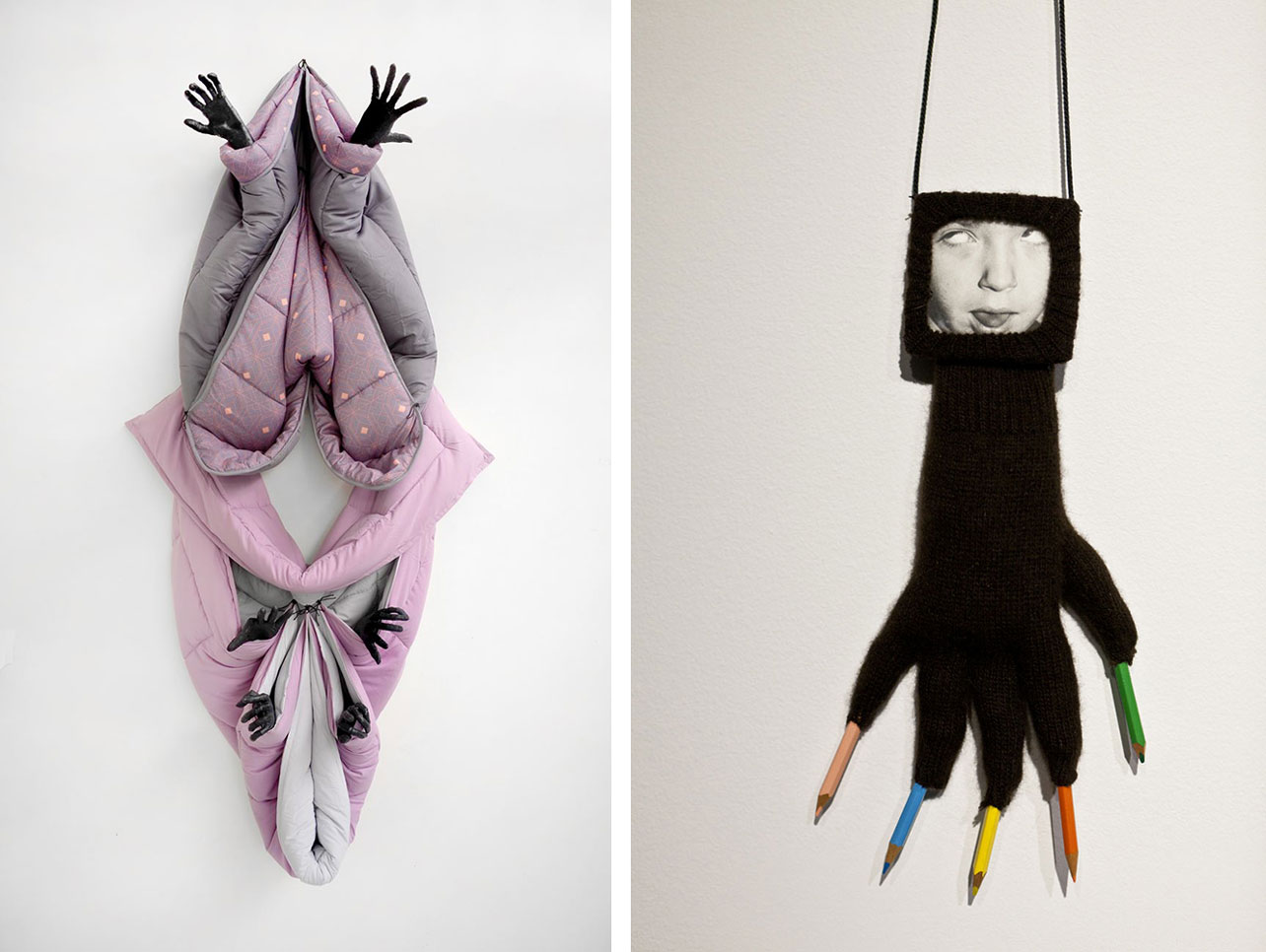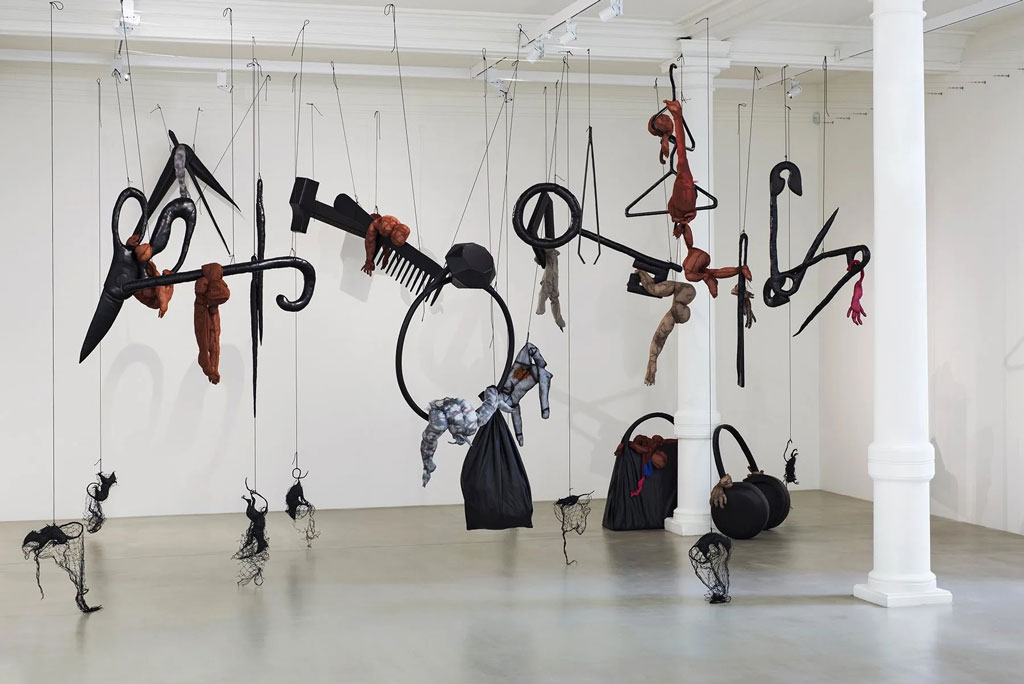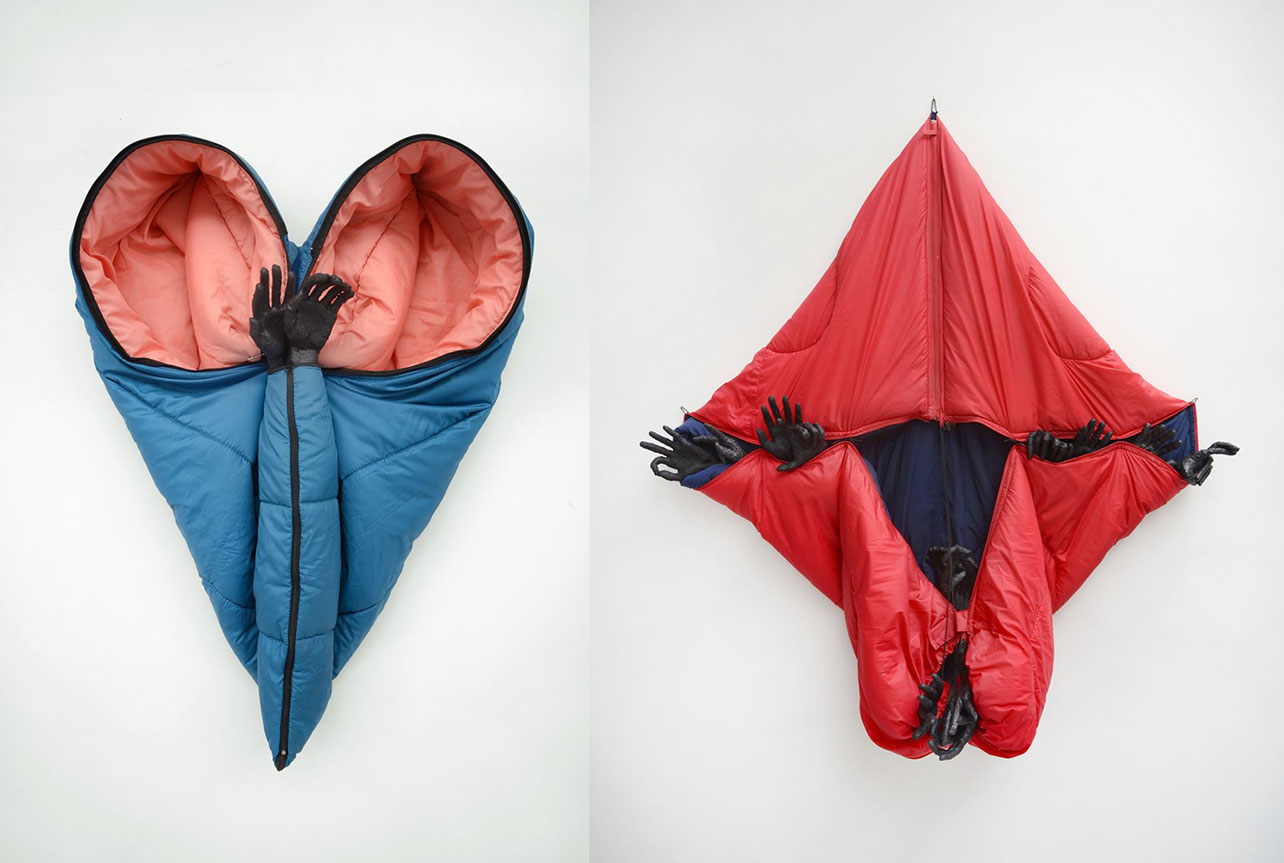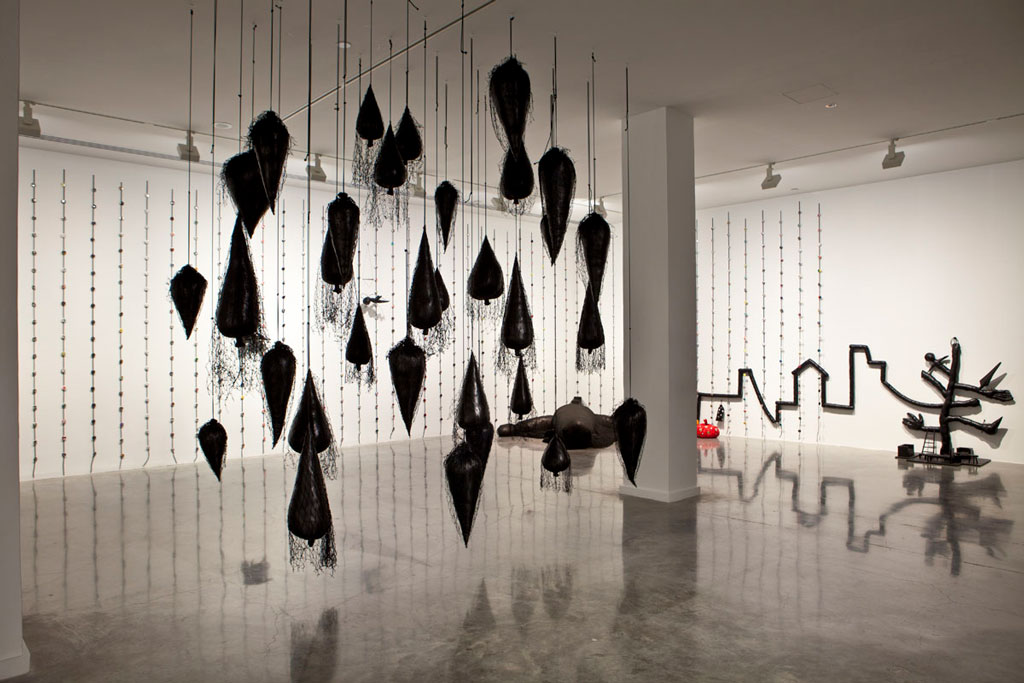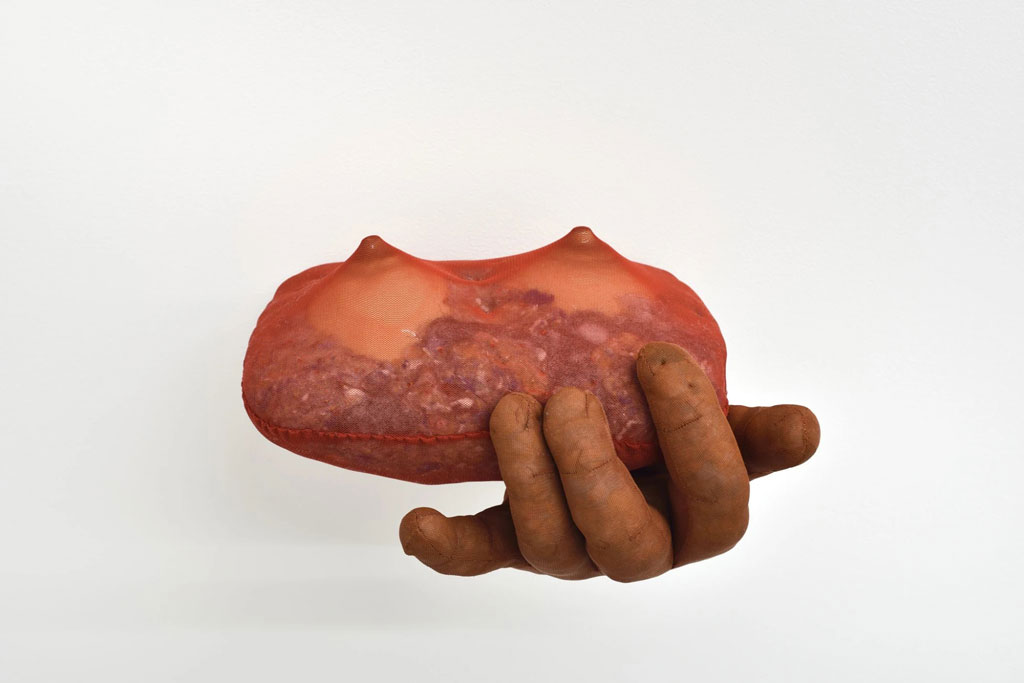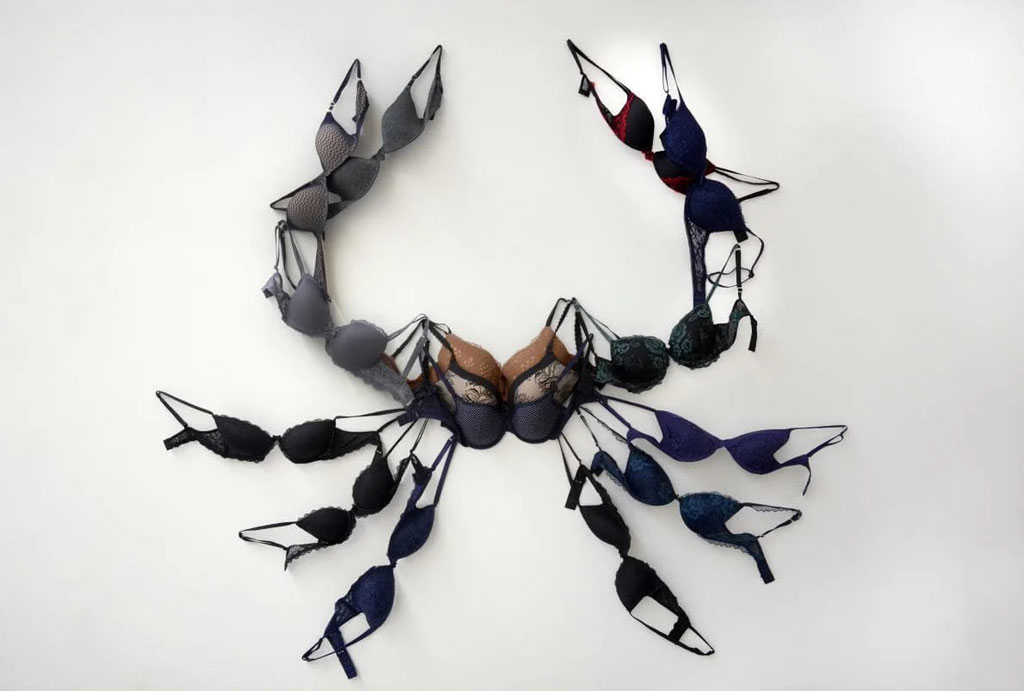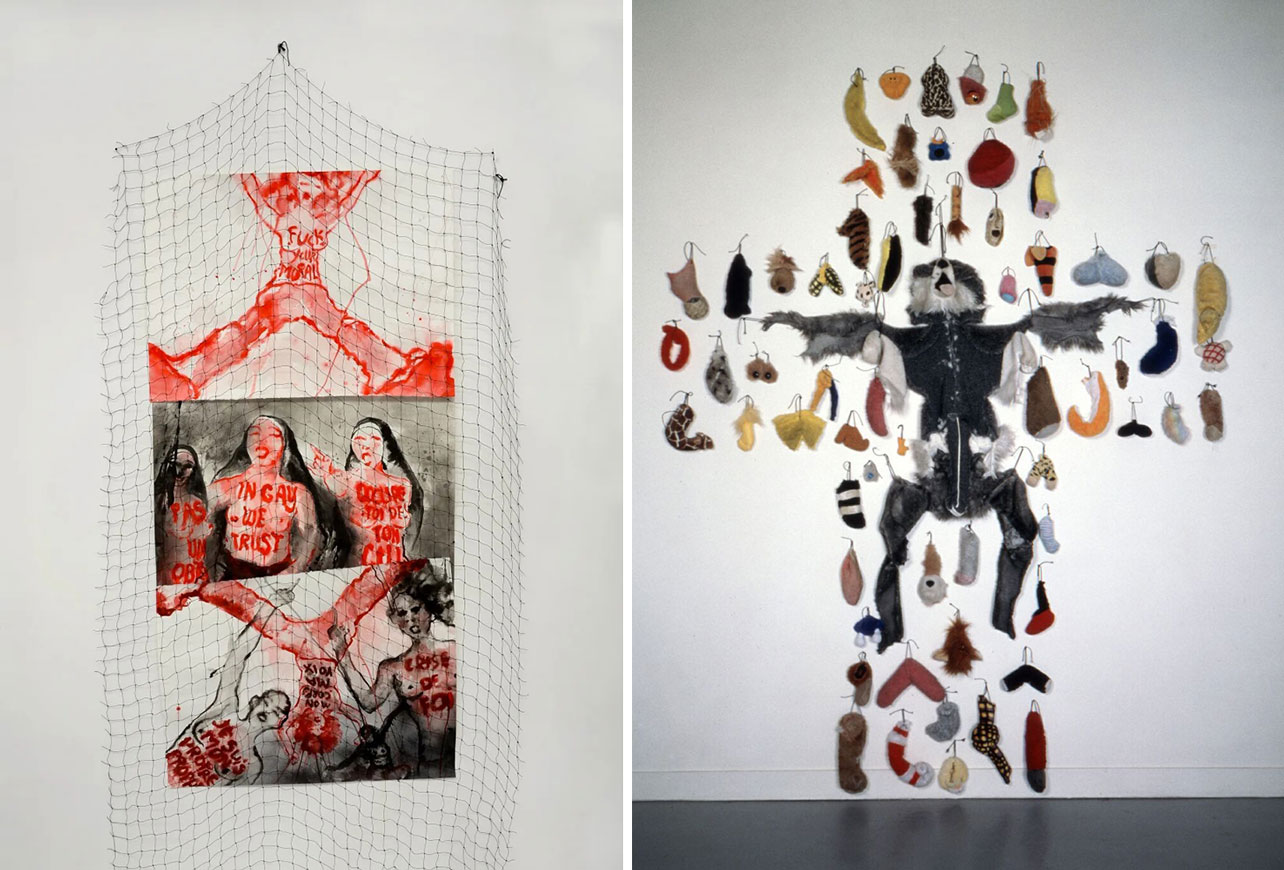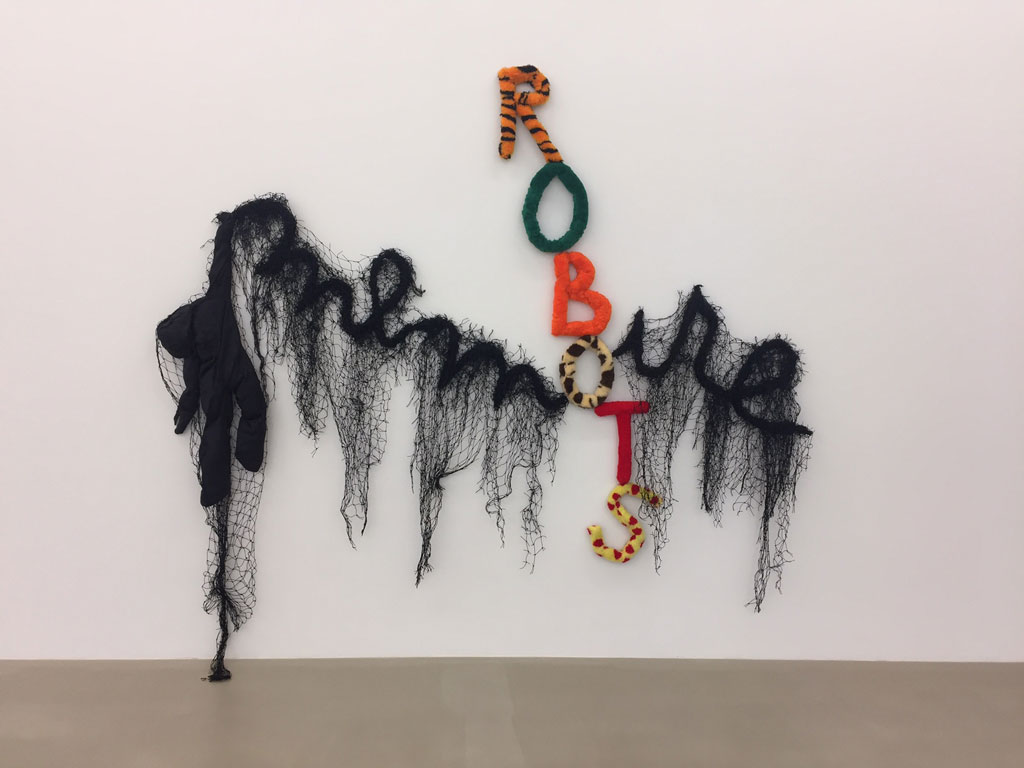ART-TRIBUTE:Weaving and other Practices… Annette Messager
 Our Tribute today is dedicated to Annette Messager (30/11/1943). Annette Messager is a leading French artist whose extensive body of work over four decades encompasses drawing, photography, needlework, sculpture and installation. Drawing from the everyday, memory, and fairytales, Annette Messager creates dark yet humorous works that interrogate diverse aspects of women’s lives, from their role in society to childhood play, and the human body.
Our Tribute today is dedicated to Annette Messager (30/11/1943). Annette Messager is a leading French artist whose extensive body of work over four decades encompasses drawing, photography, needlework, sculpture and installation. Drawing from the everyday, memory, and fairytales, Annette Messager creates dark yet humorous works that interrogate diverse aspects of women’s lives, from their role in society to childhood play, and the human body.
By Efi Michalarou
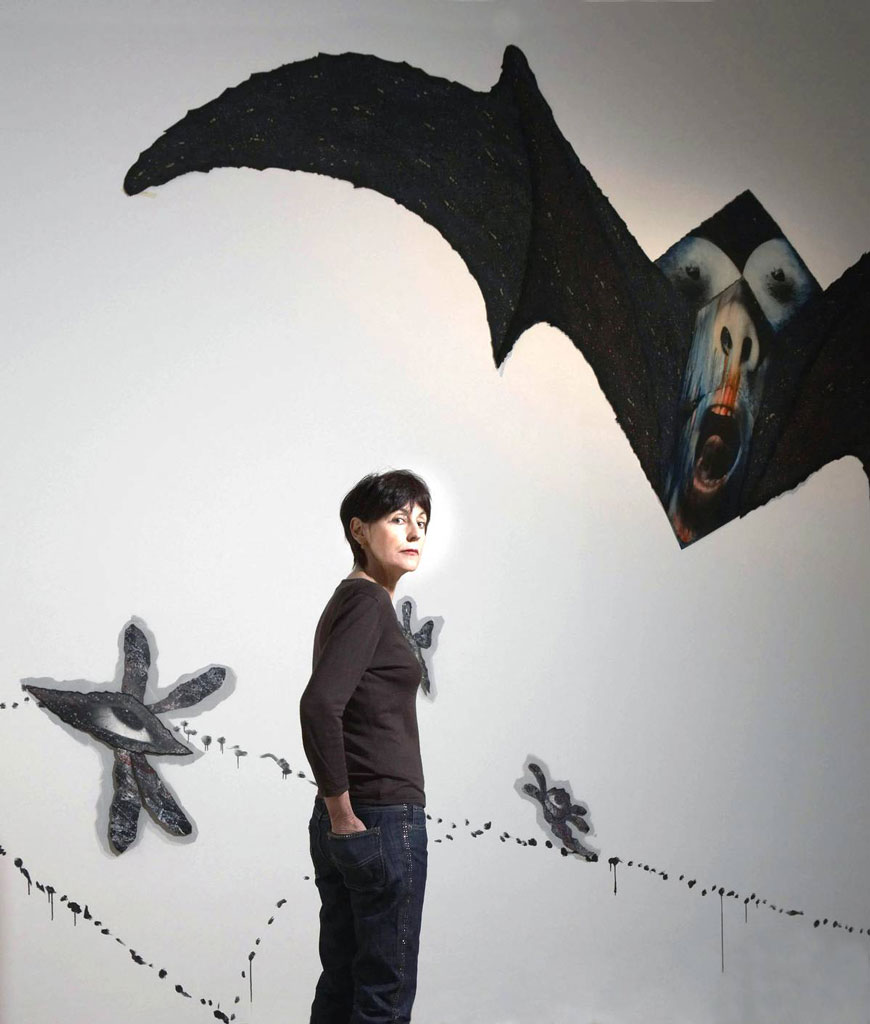 After she studied at the École Nationale Supérieure des Arts Décoratifs in Paris (1962-66), Messager was affected by the student and worker riots of May 1968 and the rise of the feminist movement. As the traditional hierarchical and autocratic codes of French society disintegrated, she found that art was now to be encountered in the ordinary, non-institutional spaces of life. Annette Messager’s works from the 1970s often incorporate material from mass-circulated media to examine the roles and representation of women. The 81 images in “Voluntary Torture” (1972), taken from fashion magazines, reveal close-ups of women’s faces or bodies while receiving various “tortures”, as Messager dubbed them, to meet the standard conventions of feminine beauty. In “My Collection of Proverbs” (1974), the artist stitched misogynistic phrases onto pieces of cloth, revealing their ludicrousness and employing embroidery—then commonly overlooked as women’s work—to create works of art. In the 1980s, Annette Messager began to explore the human body in her installations, drawing inspiration from her experiences and both historical and contemporary media. Her “Mes Trophées” series (1986-88) consists of highly contrasted black-and-white photographs, many depicting hands and feet, over which the artist painted illustrations and symbols reminiscent of medieval manuscripts, children’s books, and tattoos. “My Vows” (1988-91) was a wall installation in the form of a cluster of small monochrome photographs of assorted body parts suspended from the wall by strings. While continuing to engage with the human body in the 1990s, Messager introduced stuffed figures into her installations. Animal toys were trapped tightly between piles of books in “Fables and Tables” (1991), while woollen sculptures in the shape of internal organs were hung from the ceiling in “Penetratio” (199-94). Such soft sculptures gradually replaced the taxidermy animals Messager had used since the 1970s, notably in her “Boarders at Rest” series (1971-72), for which she created tableaux with stuffed sparrows. Many of Messager’s later works feature kinetic elements and a sense of the ominous, as if plucked out of dark fairytales. Representing France at the 51st Venice Biennale, the artist created “Casino” (2005): a room-scale installation inspired by the tales of Pinocchio. Swathes of blood-red fabric evocatively poured through the room while puppet heads turned and spun; the work was awarded that year’s Golden Lion for best national pavilion. In “Sans Légende” (2011-12), small objects wrapped in black foil fill the floor as three inflatable spheres move up and down. A projection of a clock on the wall suggests a world facing impending doom—an allusion to real-life conflicts.
After she studied at the École Nationale Supérieure des Arts Décoratifs in Paris (1962-66), Messager was affected by the student and worker riots of May 1968 and the rise of the feminist movement. As the traditional hierarchical and autocratic codes of French society disintegrated, she found that art was now to be encountered in the ordinary, non-institutional spaces of life. Annette Messager’s works from the 1970s often incorporate material from mass-circulated media to examine the roles and representation of women. The 81 images in “Voluntary Torture” (1972), taken from fashion magazines, reveal close-ups of women’s faces or bodies while receiving various “tortures”, as Messager dubbed them, to meet the standard conventions of feminine beauty. In “My Collection of Proverbs” (1974), the artist stitched misogynistic phrases onto pieces of cloth, revealing their ludicrousness and employing embroidery—then commonly overlooked as women’s work—to create works of art. In the 1980s, Annette Messager began to explore the human body in her installations, drawing inspiration from her experiences and both historical and contemporary media. Her “Mes Trophées” series (1986-88) consists of highly contrasted black-and-white photographs, many depicting hands and feet, over which the artist painted illustrations and symbols reminiscent of medieval manuscripts, children’s books, and tattoos. “My Vows” (1988-91) was a wall installation in the form of a cluster of small monochrome photographs of assorted body parts suspended from the wall by strings. While continuing to engage with the human body in the 1990s, Messager introduced stuffed figures into her installations. Animal toys were trapped tightly between piles of books in “Fables and Tables” (1991), while woollen sculptures in the shape of internal organs were hung from the ceiling in “Penetratio” (199-94). Such soft sculptures gradually replaced the taxidermy animals Messager had used since the 1970s, notably in her “Boarders at Rest” series (1971-72), for which she created tableaux with stuffed sparrows. Many of Messager’s later works feature kinetic elements and a sense of the ominous, as if plucked out of dark fairytales. Representing France at the 51st Venice Biennale, the artist created “Casino” (2005): a room-scale installation inspired by the tales of Pinocchio. Swathes of blood-red fabric evocatively poured through the room while puppet heads turned and spun; the work was awarded that year’s Golden Lion for best national pavilion. In “Sans Légende” (2011-12), small objects wrapped in black foil fill the floor as three inflatable spheres move up and down. A projection of a clock on the wall suggests a world facing impending doom—an allusion to real-life conflicts.
